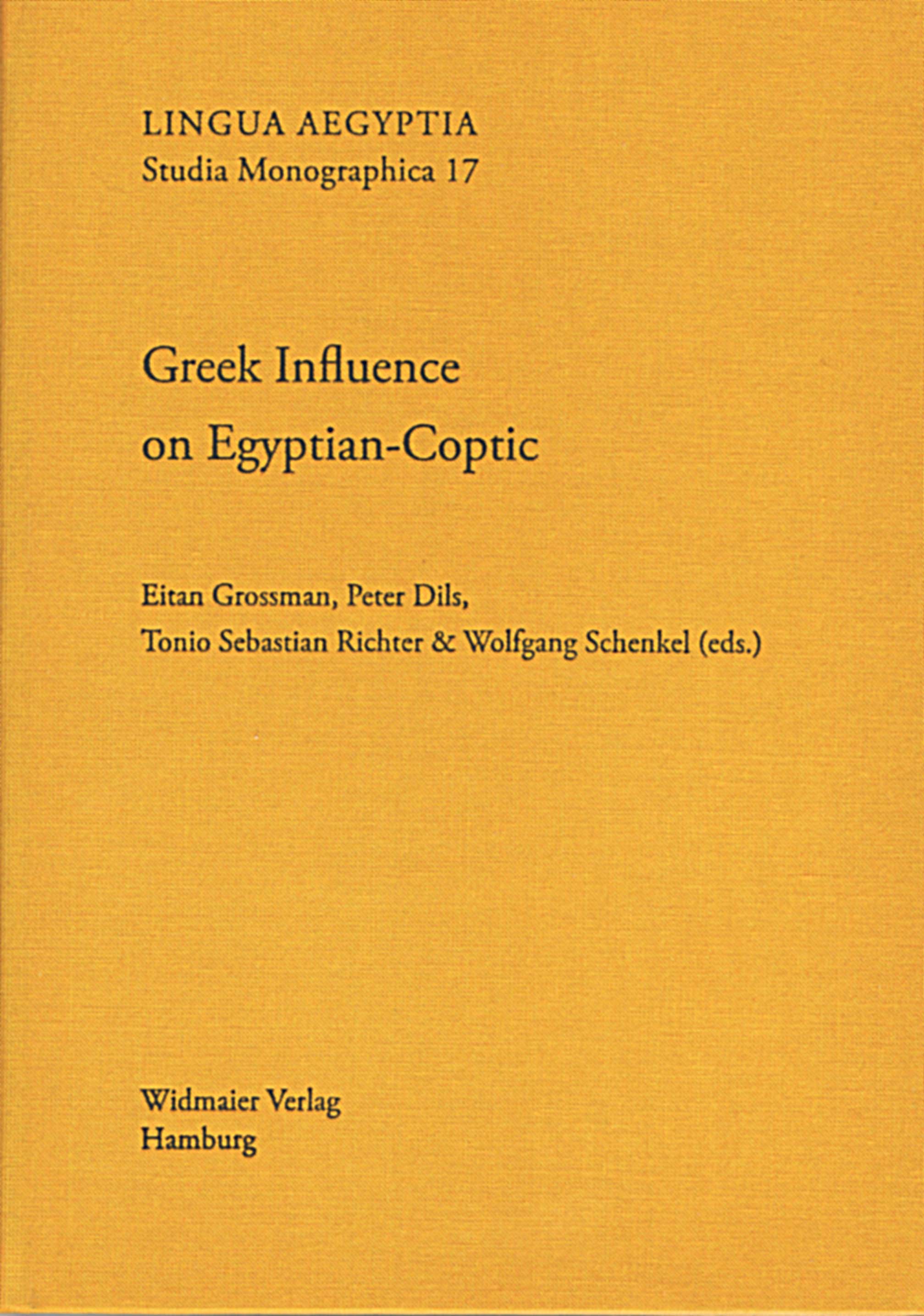Coptic, the latest phase of the Ancient Egyptian language, existed from beginning to end in a multilingual space. The indigenous Egyptian language had been in contact with Greek – and other languages – from the first millennium BCE, as well as Arabic, since the Arab conquest of Egypt in 641 CE. In effect, this is the earliest and best-attested situation of stable language contact in the ancient world. It is also a rich source for studies on lexical borrowing, since about 5000 loanwords from Greek and some 500 from Arabic form part of the lexicon of Coptic at various stages. These loanwords are documented in a wide variety of genres and registers, from the language of theology to that of science and everyday life. The focus of the volume is mainly lexical borrowing from Greek into Coptic, but other aspects will be treated as well, e.g., the sociolinguistic situation of Greek and Coptic, Coptic loanwords in Greek, Arabic loanwords in Coptic, and pre-Coptic evidence for lexical borrowing. A special focus will be on the sociolinguistic and functional aspects of lexical borrowing in Coptic.
Content
1 Linguistic Introduction
Pieter Muysken,
Using Scenarios in Language Contact Studies: Linguistic Borrowing into Coptic
Using Scenarios in Language Contact Studies: Linguistic Borrowing into Coptic
3-16
2 Views on Language Contact in Roman and Byzantine Egypt
Roger S. Bagnall,
Zones of Interaction between Greek and Egyptian in Roman Egypt
Zones of Interaction between Greek and Egyptian in Roman Egypt
19-26
Joachim Friedrich Quack,
How the Coptic Script Came About
How the Coptic Script Came About
27-96
Sofía Torallas Tovar,
The Reverse Case: Egyptian Borrowing in Greek
The Reverse Case: Egyptian Borrowing in Greek
97-113
Ewa D. Zakrzewska,
“A Bilingual Language Variety” or “the Language of the Pharaohs”? Coptic from the Perspective of Contact Linguistics
“A Bilingual Language Variety” or “the Language of the Pharaohs”? Coptic from the Perspective of Contact Linguistics
115-161
3 Borrowing from Greek into Coptic: Issues and Findings
Mathew Almond,
An Introduction and Overview to Greek Adjectives in Coptic
An Introduction and Overview to Greek Adjectives in Coptic
165-194
Barbara Egedi,
Remarks on Loan Verb Integration into Coptic
Remarks on Loan Verb Integration into Coptic
195-206
Eitan Grossman,
Dialectal Variation and Language Change: The Case of Greek Loan-Verb Integration Strategies in Coptic
Dialectal Variation and Language Change: The Case of Greek Loan-Verb Integration Strategies in Coptic
207-236
Andrea Hasznos,
Syntactic Patterns Used after Verbs of Exhorting
Syntactic Patterns Used after Verbs of Exhorting
237-264
Matthias Müller,
Greek Connectors in Coptic. A Contrastive Overview I
Greek Connectors in Coptic. A Contrastive Overview I
265-315
Elsa Oréal,
Greek Causal Discourse Markers in Coptic Letters: A Case Study in the Pragmatics of Code-Switching
Greek Causal Discourse Markers in Coptic Letters: A Case Study in the Pragmatics of Code-Switching
317-333
Stéphane Polis & Eitan Grossman,
Polysemy Networks in Language Contact: The Borrowing of the Greek-Origin Preposition κατά/ⲕⲁⲧⲁ in Coptic
Polysemy Networks in Language Contact: The Borrowing of the Greek-Origin Preposition κατά/ⲕⲁⲧⲁ in Coptic
335-367
Wolf-Peter Funk,
Differential Loan across the Coptic Literary Dialects
Differential Loan across the Coptic Literary Dialects
369-397
Nathalie Bosson,
Loanwords in Early Bohairic (B4): Problematics and Main Features
Loanwords in Early Bohairic (B4): Problematics and Main Features
399-421
Anne Boud’hors,
Greek Loanwords in Fayyumic Documentary Texts
Greek Loanwords in Fayyumic Documentary Texts
423-439
Ariel Shisha-Halevy,
A Structural-Interferential View of Greek Elements in Shenoute
A Structural-Interferential View of Greek Elements in Shenoute
441-455
Heike Behlmer,
Differentiating Lexical Borrowing according to Semantic Fields and Text Types: A Case Study
Differentiating Lexical Borrowing according to Semantic Fields and Text Types: A Case Study
457-478
4 Borrowing from Semitic Languages into Egyptian-Coptic
Jean Winand,
Identifying Semitic Loanwords in Late Egyptian
Identifying Semitic Loanwords in Late Egyptian
481-511
Tonio Sebastian Richter,
Borrowing into Coptic, the Other Story: Arabic Words in Coptic Texts
Borrowing into Coptic, the Other Story: Arabic Words in Coptic Texts
513-533
